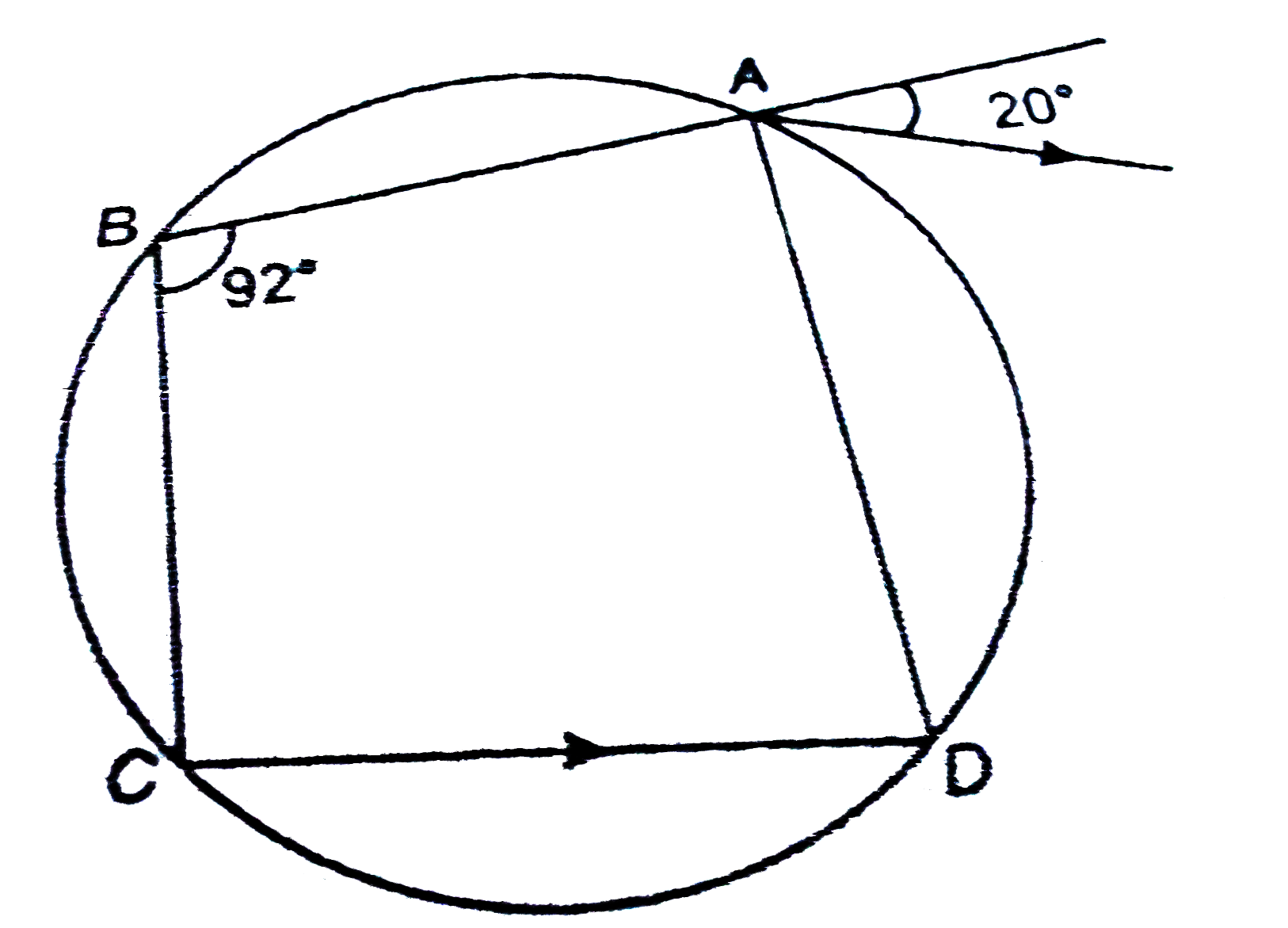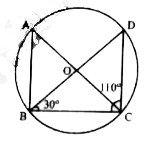In the given figure ABCD is a cyclic quadrilateral in which AE is drawn parallel to CD and BA is produced. If ∠ABC=92∘ and ∠FAE=20∘, Find ∠BCD.

88∘
98∘
108∘
72∘
The correct Answer is:C
Step by step video, text & image solution for In the given figure ABCD is a cyclic quadrilateral in which AE is drawn parallel to CD and BA is produced. If angle ABC =92^@ and angle FAE=20^@, Find angle BCD. by Maths experts to help you in doubts & scoring excellent marks in Class 14 exams.
Updated on:21/07/2023Topper's Solved these Questions
- GEOMETRYBOOK - BHARDWAJ ACADEMYCHAPTER - GEOMETRYEXERCISE - Chapter Exercise (Pervious Years Questions)
25 Videos
- GEOMETRYBOOK - BHARDWAJ ACADEMYCHAPTER - GEOMETRYEXERCISE - Chapter Exercise (Pervious Years Questions)
25 Videos
- EVALUATION BOOK - BHARDWAJ ACADEMYCHAPTER - EVALUATION EXERCISE - CHAPTER EXERCISE (Previous Years. Questions)
19 Videos
- LCM AND HCF BOOK - BHARDWAJ ACADEMYCHAPTER - LCM AND HCF EXERCISE - CHAPTER EXERCISE
35 Videos
Similar Questions
In the given figure, ABCD is a cyclic quadrilateral in which AE is drawn paralllel to CD and BA is produced to F. If ∠ABC=70∘ and ∠FAE=30∘, Find ∠BCD.
View SolutionIn the given figure ABCD is a cyclic quadrilateral in which AC and BD are its diagonals. If ∠DBC=55∘and∠BAC=45∘, find ∠BCD.

View SolutionIn the given figure, find ∠ABC.

View SolutionIn a figure AB∣∣DE,∠ABC=67∘ and ∠EDC=23∘ . Find ∠BCD:

View SolutionIn this figure ∠DBC=30∘and∠BCD=110∘. Find ∠BAC

View SolutionIn the adjoining figure, ABCD is a cyclic quadrilateral and AB is the diameter of the circle. If ∠APC=120∘, then find the value of ∠CAB.

View SolutionABCD is a cyclic quadrilateral in which AC and BD are its diagonals. If ∠DBC=550 and ∠BAC=450, find ∠BCD
View SolutionIn the given figure, PQRS is a cyclic quadrilateral. What is the measure of the angle PQR if PQ is parallel to SR?

View SolutionIn the given figure, if PQRS is a cyclic quadrilateral with respective angles. Find , the ratio of x and y.

View SolutionIn Figure, PQRS is a cyclic quadrilateral. Find the measure of each of its angles.
View Solution
